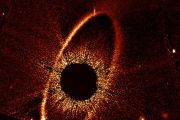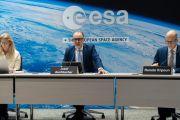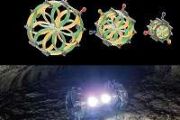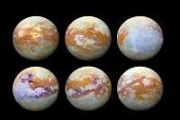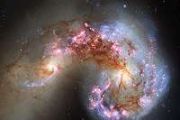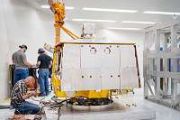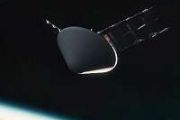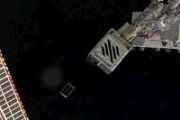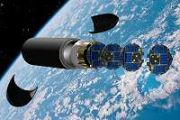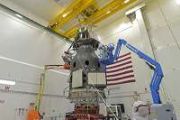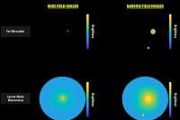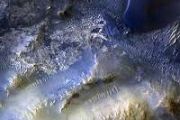
Copernical Team
SpaceX mission to return US astronauts to happen 'soon': Trump
 US President Donald Trump said Tuesday that Elon Musk's company SpaceX will "soon" begin a mission to repatriate two American astronauts who have been stranded for months on the International Space Station.
Veteran astronauts Butch Wilmore and Suni Williams arrived at the ISS in June aboard Boeing's Starliner, and were due to spend only eight days on the orbiting laboratory, but technical pr
US President Donald Trump said Tuesday that Elon Musk's company SpaceX will "soon" begin a mission to repatriate two American astronauts who have been stranded for months on the International Space Station.
Veteran astronauts Butch Wilmore and Suni Williams arrived at the ISS in June aboard Boeing's Starliner, and were due to spend only eight days on the orbiting laboratory, but technical pr Starlink connectivity enhances Oracle Enterprise Communications Platform
 Oracle is leveraging Starlink's low Earth orbit satellite broadband network to deliver enhanced high-speed connectivity for its Enterprise Communications Platform (ECP). This collaboration empowers Oracle customers to seamlessly connect from virtually any location - including remote and underserved areas - while accessing features such as real-time video and audio streaming for industry applicat
Oracle is leveraging Starlink's low Earth orbit satellite broadband network to deliver enhanced high-speed connectivity for its Enterprise Communications Platform (ECP). This collaboration empowers Oracle customers to seamlessly connect from virtually any location - including remote and underserved areas - while accessing features such as real-time video and audio streaming for industry applicat Safran DSI achieves milestone with first US-built VISION satellite antenna
 Safran Defense and Space, Inc. (DSI) has announced the successful production of its first U.S.-manufactured VISION 5.5-meter full-motion satellite tracking antenna. The advanced unit, designed for Low Earth Orbit (LEO) operations, was built at the company's Norcross, Georgia, facility, marking a significant step in U.S.-based manufacturing capabilities. Four additional units are slated for produ
Safran Defense and Space, Inc. (DSI) has announced the successful production of its first U.S.-manufactured VISION 5.5-meter full-motion satellite tracking antenna. The advanced unit, designed for Low Earth Orbit (LEO) operations, was built at the company's Norcross, Georgia, facility, marking a significant step in U.S.-based manufacturing capabilities. Four additional units are slated for produ New insights into solar opacity through helioseismology
 Helioseismology, the study of the Sun's acoustic oscillations, provides a powerful tool for probing the internal properties of our star with remarkable precision. By analyzing these sound waves, scientists can reconstruct critical parameters such as the Sun's density, temperature, and chemical composition. This transformative method enables researchers to explore the Sun's inner workings as an a
Helioseismology, the study of the Sun's acoustic oscillations, provides a powerful tool for probing the internal properties of our star with remarkable precision. By analyzing these sound waves, scientists can reconstruct critical parameters such as the Sun's density, temperature, and chemical composition. This transformative method enables researchers to explore the Sun's inner workings as an a NASA Juno Mission Discovers Record-Breaking Volcanic Activity on Io
 NASA's Juno mission has uncovered an extraordinary volcanic feature on Io, Jupiter's highly active moon. This newly discovered hot spot, located in Io's southern hemisphere, surpasses Earth's Lake Superior in size and emits an astonishing energy output six times greater than all of Earth's power plants combined. The revelation, made possible by Juno's Jovian Infrared Auroral Mapper (JIRAM), high
NASA's Juno mission has uncovered an extraordinary volcanic feature on Io, Jupiter's highly active moon. This newly discovered hot spot, located in Io's southern hemisphere, surpasses Earth's Lake Superior in size and emits an astonishing energy output six times greater than all of Earth's power plants combined. The revelation, made possible by Juno's Jovian Infrared Auroral Mapper (JIRAM), high Moon is more geologically active than previously believed
 The moon's surface has long been a subject of study, offering clues about its geological and evolutionary history. Dark, flat regions known as lunar maria, which are filled with solidified lava, were thought to have formed through significant compression billions of years ago. Many researchers concluded that these regions have remained dormant ever since. However, a new study indicates that the
The moon's surface has long been a subject of study, offering clues about its geological and evolutionary history. Dark, flat regions known as lunar maria, which are filled with solidified lava, were thought to have formed through significant compression billions of years ago. Many researchers concluded that these regions have remained dormant ever since. However, a new study indicates that the How to Operate NASA's Orion Spacecraft for Artemis II Mission
 During NASA's Artemis II mission, the first crewed flight under the Artemis campaign, astronauts will manually operate the Orion spacecraft as part of their journey around the Moon and back. This mission is a critical test to validate the spacecraft's performance with a human crew onboard before future lunar landing missions.
The first major test of manual control, called the proximity ope
During NASA's Artemis II mission, the first crewed flight under the Artemis campaign, astronauts will manually operate the Orion spacecraft as part of their journey around the Moon and back. This mission is a critical test to validate the spacecraft's performance with a human crew onboard before future lunar landing missions.
The first major test of manual control, called the proximity ope GITAI Successfully Completes Demonstration of Advanced 16U Satellite
 GITAI USA Inc. (GITAI), a leader in space robotics, has announced the successful launch and mission completion of its in-house developed 16U satellite. The satellite was launched into low Earth orbit aboard SpaceX's Falcon 9 on December 21, 2024, at 3:34 AM (PST). The mission met all three predefined success criteria, earning a "Full Success" designation for technical verification.
GITAI a
GITAI USA Inc. (GITAI), a leader in space robotics, has announced the successful launch and mission completion of its in-house developed 16U satellite. The satellite was launched into low Earth orbit aboard SpaceX's Falcon 9 on December 21, 2024, at 3:34 AM (PST). The mission met all three predefined success criteria, earning a "Full Success" designation for technical verification.
GITAI a Explaining persistent hydrogen in Mars atmosphere
 The arid and cold landscape of modern Mars contrasts sharply with its past, when flowing rivers and lakes carved its surface billions of years ago. Researchers from Harvard have now proposed a compelling explanation for this ancient warmth and moisture, offering new insights into the planet's climate history.
Scientists at the Harvard John A. Paulson School of Engineering and Applied Scien
The arid and cold landscape of modern Mars contrasts sharply with its past, when flowing rivers and lakes carved its surface billions of years ago. Researchers from Harvard have now proposed a compelling explanation for this ancient warmth and moisture, offering new insights into the planet's climate history.
Scientists at the Harvard John A. Paulson School of Engineering and Applied Scien EdgeCortix SAKURA-I AI Accelerator Validated for Radiation Resilience in Space Missions
 EdgeCortix Inc., a prominent fabless semiconductor company specializing in energy-efficient artificial intelligence (AI) processing at the edge, has announced that its SAKURA-I AI Accelerator has been proven suitable for space missions, including Earth orbit and lunar operations, due to its strong radiation resilience.
The AI accelerator underwent rigorous testing by NASA's Electronic Part
EdgeCortix Inc., a prominent fabless semiconductor company specializing in energy-efficient artificial intelligence (AI) processing at the edge, has announced that its SAKURA-I AI Accelerator has been proven suitable for space missions, including Earth orbit and lunar operations, due to its strong radiation resilience.
The AI accelerator underwent rigorous testing by NASA's Electronic Part 





